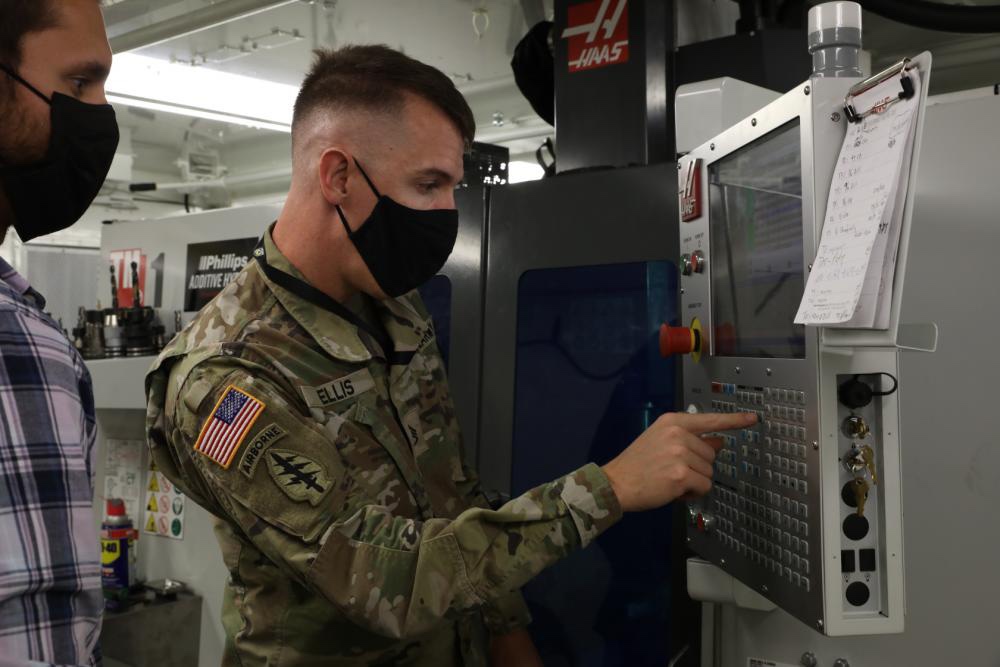At the recent Defense Logistics Agency [DLA] Supply Chain Alliance Conference and Exhibition in Richmond, Virginia (5/3-5/4), head of the National Defense Industrial Association (NDIA) and former deputy secretary of defense, David Norquist, said the Department of Defense’s (DOD’s) future rests on the resiliency of the US defense industrial base. Relevantly for the additive manufacturing (AM) sector, the theme of this year’s conference — which is hosted by the NDIA — was “Building Resilient Supply Chains, Revitalizing Domestic Manufacturing & Fostering Growth.”
It is highly indicative of the global economy’s current trajectory, that news about the defense industrial base is now more or less automatically news about AM, and is the case, more or less, because of the word “resiliency.” Moreover, while the call for a more resilient defense industrial base from Washington’s elite is hardly news at this point, this particular comment is nonetheless significant because of the context of where it was made, as well as the source.
As deputy secretary of defense in the Trump administration, the now-lobbyist Norquist argued that the DoD should implement a zero-based budget for 2021-2025. Essentially, this means that every dollar the DoD would spend would have to be justified again for every budget, with the criteria for a justified expense being that it “is focused on increasing lethality.”

In a memo that Norquist issued to the DoD on August 2, 2019, it states, “We will begin immediately and move forward aggressively, as all defense-wide organizations, appropriations, funds and accounts will be included in the zero-based budgeting review. Given the variety of defense-wide organizations and functions, we will tailor the review approach as needed. The review will consider all ideas — no reform is too small, too bold or too controversial to be considered.”

Interestingly, then, Norquist doesn’t seem to associate strengthening the industrial base with an aggregate increase in military spending, and in fact seems to advocate for cutting as much of the fat from the defense budget as possible. Before becoming secretary of defense, as comptroller of DoD, Norquist oversaw the first audit of the DoD. (“Starving the beast” that is the federal government is a family hobby for the Norquists: David’s brother Grover is the founder of right-wing fringe organization Americans for Tax Reform, which advocates for a flat tax.)
At the same time, largely out of a concern for the US’s ability to stay economically competitive with China, Norquist also placed a priority on making sure the R&D dollars for emerging technologies remained robust. In this sense, his influence, or at least the influence of his line of thinking, can easily be seen in recent developments. For instance, the Biden administration’s last military budget included the largest R&D budget in history, which partially explains why there has been so much defense money flowing into the 3D printing sector in 2023.
Again to contrast what he perceives to be the difference between the US and China, at the DLA conference Norquist pointed out that the US government can’t just command its businesses what to make (even though in many cases it has and does). Along those lines, he stated, “For national security, we need to protect against both disruption as well as tampering. But what makes a market so powerful is exactly what makes this challenge so hard.” That is, companies have to figure out how to cooperate even as they’re competing — a point I’ve heard brought up frequently at 3D printing conferences.
Above all, the lobbying for this adjustment to the military budget, i.e. “leaner”, “more resilient”, etc., reinforces something I mentioned at one point about how even when cuts to the US military budget finally start to happen, the companies in the AM sector with exposure to the defense market will be unaffected. In fact, I believe those companies can benefit, as the same factors driving a growing realization that the US military budget has been out of control for far too long will also inevitably lead to the realization that AM, and advanced manufacturing more generally, are parts of the budget that need to be increased rather than eliminated.
Additionally, it is likely that in many if not most cases, rather than representing an overall shrinkage of the federal budget, the cuts to military spending will in fact be reallocated to other departments, especially energy and commerce. This would be favorable to the AM sector as well, and also suggests obvious areas for branching out to companies that are currently primarily focused on defense.
Subscribe to Our Email Newsletter
Stay up-to-date on all the latest news from the 3D printing industry and receive information and offers from third party vendors.
Print Services
Upload your 3D Models and get them printed quickly and efficiently.
You May Also Like
To Dissolve or Not to Dissolve: The Power of Soluble Supports in FDM Printing
Disclosure: The PrusaXL used for this review was provided to me by Prusa free of charge, and I have not received any other compensation. All opinions expressed are my own,...
Kickstarter Release: New SALTGATOR Desktop Injection Molding Machine is Optimized for 3D Printed Molds
As the latest generations of industrial-grade advanced manufacturing equipment continue to grow in popularity, availability, and affordability, you might expect that the marketplace for desktop machinery would start to stagnate....
What Digital G-O-D Reveals About the State of Art, AI, and 3D Printing Today
Digital G-O-D, an art exhibition held in Amsterdam, brought together technology, creativity, and a global mix of artists. Hosted by the collective METAMO and supported by printing innovator Mimaki, the...
Prusa Core One: Innovating or Catching Up?
Disclosure: The Core One was provided to me by Prusa free of charge for the purpose of this review. I have not received any other compensation. All opinions expressed are...

































